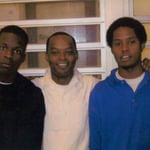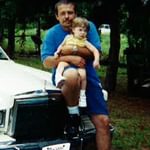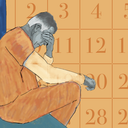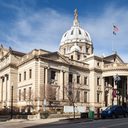On October 2, the first day of its new term, the Supreme Court denied review in two high-profile death penalty cases: Toforest Johnson and Robert Roberson. Both men have long maintained their innocence and have garnered broad bipartisan support for their innocence claims.

In Alabama, Mr. Johnson’s conviction was largely based on an “earwitness” who received a monetary award after her testimony, a fact that was not revealed until seventeen years later. Mr. Johnson was convicted of the 1995 shooting of Deputy Sheriff William Hardy, despite over ten eyewitnesses placing Mr. Johnson across town at a nightclub at the time of the crime. Violet Ellison approached police after the State put out a $5,000 reward offer for information on the case, and testified at trial that she overheard a three-way jail phone call in which a man referred to himself as “Toforest” and confessed to the crime. The State denied that Ms. Ellison received a reward for her testimony for almost two decades, until a retired employee from the District Attorney’s office told Mr. Johnson’s defense team about a set of “confidential reward files” in 2018. The State then disclosed a file containing a $5,000 check made out to Ms. Ellison in 2001, claiming it had been “misfiled.” Despite these facts, the lower courts declined to find a Brady violation, leading Mr. Johnson to ask the Supreme Court directly for Brady relief. Numerous Alabama legal officials support a new trial, including the current District Attorney, the original trial prosecutor, a former Chief Justice, and a former Attorney General. Three of the original jurors also believe they convicted the wrong man. “The Supreme Court only reviews a small fraction of the cases that come to it,” said Ty Alper, an attorney for Mr. Johnson. “While we wish they had chosen to take a closer look at Mr. Johnson’s case, we are looking forward to returning to the appeal we have pending in Jefferson County, where the District Attorney has already called for a new trial.”

In Mr. Roberson’s case in Texas, evidence has clearly demonstrated that no murder occurred at all. Mr. Roberson was convicted of killing his daughter, Nikki, based on the now-discredited scientific theory of “Shaken Baby Syndrome” (SBS). The theory held that a certain constellation of symptoms, including brain swelling and bleeding, could only occur through malicious shaking — in other words, any child who died of these symptoms had been murdered. Evidence now shows that numerous other medical conditions can cause the same symptoms, including pneumonia and accidental falls; Nikki experienced both in the days before her death. At least 32 caregivers convicted based on SBS have been exonerated, and even the doctor who proposed the condition has renounced it. Dr. Norman Guthkelch called for a review of SBS convictions in 2012, saying, “I am frankly quite disturbed that what I intended as a friendly suggestion for avoiding injury to children has become an excuse for imprisoning innocent people.” In his petition, Mr. Roberson asked the Court to consider whether a conviction violated due process when the entire causation theory of the crime was undermined by modern science and medicine, and when the habeas court ruled against the defendant based on outdated forensic theories. Physicians, scientists, federal judges, and innocence advocates joined in asking the Court to grant Mr. Roberson relief. “Robert Roberson is an innocent father who has languished on Texas’s death row for 20 years for a crime that never occurred and a conviction based on outdated and now refuted science,” said Gretchen Sims Sween, Mr. Roberson’s attorney. “Robert’s legal team has been considering remaining options, which now can and must be pursued in light of the U.S. Supreme Court’s decision today to turn away from this righteous case.”
Patrick Darrington, “Earwitness” podcast digs into the bewildering case of Toforest Johnson, Alabama Political Reporter, October 2, 2023; Marcia Coyle, How controversial will the next Supreme Court docket be? We’re about to find out, PBS Newshour, September 26, 2023; Roberson Petition, May 11, 2023; Johnson Petition, April 17, 2023; Ivana Hrynkiw, Lawyers for Alabama Death Row inmate Toforest Johnson appeal to U.S. Supreme Court, Birmingham Real-Time News, April 17, 2023; National Registry of Exonerations.



